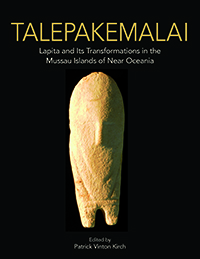Item record
Documentation
Fishbone Methods
The fish remains included in this study are from eight sites, sampled at varying intensities. Site ECA, composed of four main loci, received the most attention by far. Because of the large number of faunal remains from this site (44,167 NISP vertebrate faunal remains from ECA were identified as fish), and time constraints, not all of them could be analyzed. Considering project contexts, Butler and Kirch devised a strategy for subsampling fish remains from site ECA. In the block of units of Area B representing 29 1 m2 grid units, remains were sampled in a checkerboard fashion, with materials from every alternate 1 m2 unit receiving intensive analysis. All fish remains from ECA Area A and Area C were analyzed. All the fish remains from the remaining seven sites were included in analysis.
Comparative Skeletons and Taxonomic Identification
An early step in analysis involved creating a list of fish taxa that could be present in the Mussau assemblages based on several fishery studies of the Indo-Pacific and waters around New Guinea (Kailola 1987a, b; Masuda 1975; Munro 1967). Skeletons from as many of the fish families from local marine waters as possible were obtained for comparative analysis. Greatly assisting the faunal project was the capture of 61 fish representing 19 families from the Mussau Islands, by John Aini of the Kavieng Fisheries Research Lab under the supervision of Dr. Andrew Wright (Dept. of Fisheries, Marine Resources, PNG), Kavieng, New Ireland in the 1980s. Kirch’s team in Mussau prepared the skeletons, which were incorporated into the collection of the Oceanic Archaeology Laboratory. An additional 45 skeletons from 14 families were borrowed from the B. P. Bishop Museum. Overall, I had access to skeletons from 25 families, with multiple genera and species for several families.
I began analysis by sorting the fish remains from the Mussau sites (including selected units from ECA-B) to skeletal element. After completing this exercise across all site assemblages, I went through all the original bags a second time, to pull remains that were inadvertently excluded in the first sort. For each element group (e.g., articulars, quadrates, hyomandibulae), I then developed criteria to distinguish specimens by fish family. I attempted to distinguish vertebrae from all fish. Those from Scombridae (tunas) and elasmobranchs (shark and ray) were easy to distinguish, but I was not able to define criteria to distinguish other families (see Lambrides and Weisler 2015 for more on this topic).
Given the tremendous number of genera and species comprising Indo-Pacific region fish families and the limited number of these taxa among the comparative skeletons, obtaining family-level identifications was the goal. Subfamily assignments were obtained in some cases. I sent remains from several fish groups (e.g., teeth from sharks and rays, eels [Anguilliformes], Perciformes pharyngeals that did not match reference materials) to ichthyologists who specialized in that group for close study. In other cases, subfamily assignments were based on the systematic literature that included osteological characters diagnostic of particular taxa.
I created additional analytic categories to address possible identification bias or to address limitations with the comparative collections. The remains of Scaridae and Lethrinidae tend to dominate previously studied Lapita assemblages (Butler 1988:Table 4). The skeletal morphology of these families is also extremely distinctive, suggesting the possibility that ease of identification has artificially inflated their abundance. To address this possibility, elements which were clearly not scarid or lethrinid, but which could not be assigned securely to another family, were recorded as “nonScaridae/nonLethrinidae.” I also created the category “Serranidae/Lutjanidae” (seabasses/snappers) for specimens that were clearly from one of these two families, but which could not be placed in a single family. I created the “Scombridae/Sphraenidae” category (tunas, mackerels/barracuda) for the same reason.
Reuse
Butler, Virginia L., 2021. List of Comparative Fish Skeletons, Chapter 7 supplementary materials for Talepakemalai: Lapita and its Transformations in the Mussau Islands of Near Oceania. Version 1. Cotsen Institute of Archaeology Press. https://doi.org/10.25346/S6/AW8EYY
